History of ELNR
In connection with the general LAMCO strike in 1966, which
caused a great deal of upheaval when reported in Swedish
TV, it became clear that it was necessary to be able to
reach LAMCO employees with information at such times.
The question was put to CSS (Communication and Signaling
Section) Radio Workshop whether a transmitter could be established
to transmit music from a tape recorder most of the time
and provide live broadcasts when needed.A few thousand dollars
were made available for buying a transmitter.
Gunnar Mathisen and Åke Bergfuhr were made responsible
for the project and decided to design and build the station
themselves. This way the money provided could provide both
the transmitter and other equipment.
The Liberian authorities assigned the station a frequency
of 953 kHz in Yekepa and 746 kHz in Buchanan. The station
in Yekepa was given the call signal ELBS but this was soon
changed to ELNR. EL = code for Liberia, and NR = Nimba Radio.
Radio ELNR 10th Anniversary was celebrated and a brochure
produced. Click here to
see it.
ELNR was broadcasting as late as 1985, apparently. When
did it stop?
Below follows some pictures from the station.
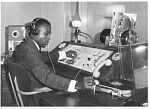
T.. Mac Johnson, Radio Announcer, more known as "The Hootchie
Cootchie Man". 1967
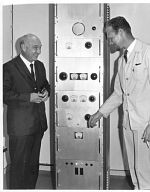
To the left is the general manager of VOA, Liberia and
to the right is Kurt Eriksson. They are standing on each
side of the actual medium wave transmitter, which was built
in CSS (CSS=Communication and Signaling Section) and the
main constructor was Åke Bergfuhr. 1967.
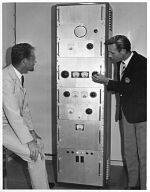
Kurt Eriksson (left), the transmitter and Gunnar Mathisen
who also played a major role in the construction of the
station. 1967.
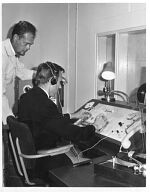
Kurt Eriksson and Gunnar Mathisen at the controls of the
station. 1967.
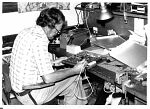
Kurt Eriksson in 1977 shown at his workbench in Radio
Workshop, CSS repairing some electronic gadget. The picture
were taken to be part of the 10-year jubilee pamphlet for
ELNR.
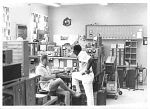
Part of the Radio Workshop, CSS, Nimba. At the table is
the Norwegian Radio Technician Willy Hansen. What is the
name of the Liberian Radio Technician?. He had spent some
time in Sweden and had a Swedish wife.
Station description in World Radio and TV Handbook:
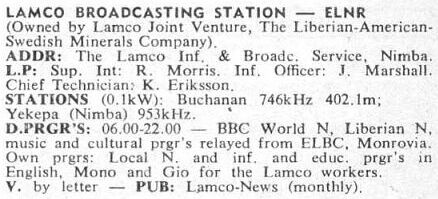
Pictures and text kindly provided by Kurt
Eriksson
|



